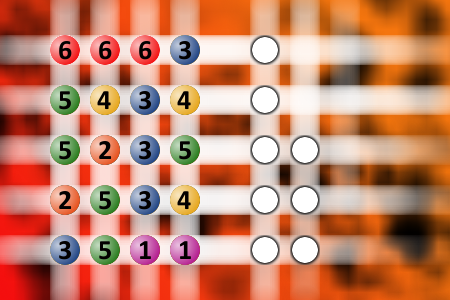What a winning combination?
The computer chose a secret code (sequence of 4 digits from 1 to 6). Your goal is to find that code. Black circles indicate the number of hits on the right spot. White circles indicate the number of hits on the wrong spot.Correct answers: 31
The first user who solved this task is Nílton Corrêa De Sousa.
#brainteasers #mastermind

A group of third, fourth and f...
A group of third, fourth and fifth graders accompanied by two female teachers went on a field trip to the local racetrack to learn about thoroughbred horses and the supporting industry.
During the tour some of the children wanted to go to the toilet so it was decided that the girls would go with one teacher and the boys would go with the other.
As the teacher assigned to the boys waited outside the men's toilet, one of the boys came out and told her he couldn't reach the urinal. Having no choice, she went inside and began hoisting the little boys up by their armpits, one by one.
As she lifted one, she couldn't help but notice that he was unusually well endowed for an elementary school child.
"I guess you must be in the fifth," she said.
"No ma'am," he replied, "I'm in the seventh, riding Silver Arrow. Thanks for the lift anyhow."
During the tour some of the children wanted to go to the toilet so it was decided that the girls would go with one teacher and the boys would go with the other.
As the teacher assigned to the boys waited outside the men's toilet, one of the boys came out and told her he couldn't reach the urinal. Having no choice, she went inside and began hoisting the little boys up by their armpits, one by one.
As she lifted one, she couldn't help but notice that he was unusually well endowed for an elementary school child.
"I guess you must be in the fifth," she said.
"No ma'am," he replied, "I'm in the seventh, riding Silver Arrow. Thanks for the lift anyhow."

